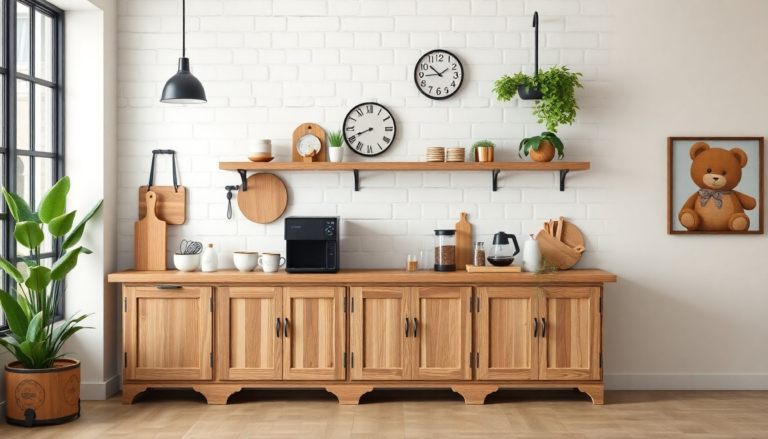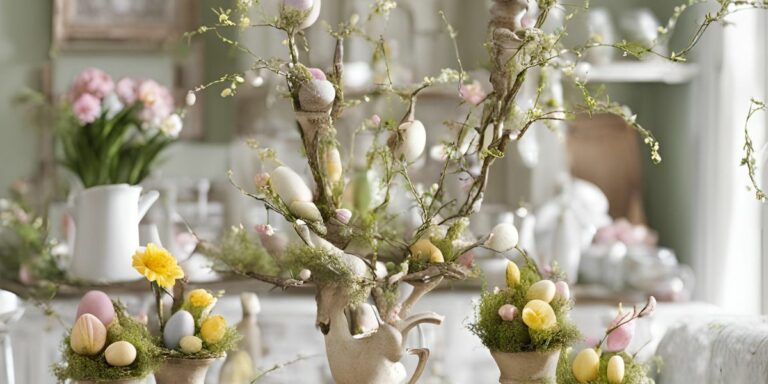24 Montessori Bedroom Ideas
If you’ve ever scrolled through Pinterest and found yourself mesmerized by those beautifully minimal, kid-friendly bedrooms where everything seems calm and intentional — chances are, you’ve stumbled upon a Montessori-inspired setup.
Montessori bedrooms aren’t just a design trend; they’re a philosophy brought to life.
Rooted in independence, simplicity, and respect for a child’s pace, this approach helps little ones feel capable, curious, and confident… all within the comfort of their own space.
If you’re ready to create a dreamy, functional Montessori bedroom, you’re in the right place. Let’s explore 24 Montessori bedroom ideas that are as practical as they are Pinterest-worthy — and yes, your child will actually love being in them.
1. Start with a Floor Bed
The Montessori floor bed is the heart of it all. Forget tall cribs or towering bunk beds — a simple mattress on the floor (or a low bed frame) allows your child to get in and out safely and independently.
It also gives them a sense of ownership over their sleeping space. Plus, it looks wonderfully minimal!
2. Keep Furniture Child-Sized
In a Montessori bedroom, everything is designed for your child’s reach and comfort. Think mini wardrobes, low bookshelves, and small chairs.
When kids can access their clothes and toys themselves, they learn responsibility and independence in the most natural way.
3. Embrace Neutral Colors
Montessori design thrives on calm, natural tones. Whites, creams, soft grays, muted blues, and earthy greens help create a soothing environment that encourages focus and peace. Think of it as a little sanctuary for growing minds.
4. Add Natural Materials
Wood, rattan, cotton, linen — Montessori spaces are full of textures that connect kids to nature. A wooden bed frame, wicker baskets, or a soft jute rug bring warmth and grounding to the space.
5. Use Low Open Shelves
Low, open shelving gives your child the freedom to choose what to play with and encourages tidiness. You’ll find they actually enjoy putting things back when the shelves aren’t cluttered or out of reach!
6. Curate Toy Rotations
Instead of filling the room with every toy your child owns, try rotating toys every couple of weeks. It keeps things fresh and avoids overwhelm. Less is truly more in a Montessori setup.
7. Create a Cozy Reading Nook
Every Montessori bedroom needs a quiet space for books. Add a low bookshelf, a floor cushion, and a few favorite stories within easy reach. This little corner becomes a peaceful retreat that inspires a lifelong love of reading.
8. Display Artwork at Child Height
Kids love seeing beauty around them — but only if they can actually see it. Hang art at your child’s eye level, not yours. Framed prints, nature photos, or even your child’s own artwork can bring warmth and creativity to the space.
9. Keep Decor Simple and Intentional
Montessori rooms aren’t about filling every corner; they’re about thoughtful simplicity. Choose decor with purpose — a mirror for self-recognition, plants for care and calm, or a rug to define play areas. Every piece should serve the child in some way.
10. Add a Montessori Wardrobe
A low, open wardrobe or clothing rack encourages independence during morning routines. Your child can choose their outfit, hang clothes neatly, and learn the art of self-dressing — all with a little autonomy.
11. Introduce Soft Lighting
Skip the harsh overhead bulbs. Instead, opt for warm, soft lighting — a small bedside lamp or fairy lights can make the space feel calm and magical, especially during bedtime routines.
12. Incorporate Nature Elements
Bring the outside in with a few easy-care plants, a wooden mobile, or nature-themed prints. This connection to nature not only soothes the senses but also sparks curiosity and wonder.
13. Provide a Mirror at Floor Level
A floor mirror is a Montessori must-have for babies and toddlers. It helps with self-awareness, coordination, and body movement. For older children, a full-length mirror near their wardrobe encourages independence when getting dressed.
14. Keep Clutter to a Minimum
Montessori bedrooms thrive on order. Use baskets, bins, and labeled shelves to make cleanup easy and satisfying. When the space feels peaceful and organized, your child’s mind follows suit.
15. Add a Low Table for Play or Art
A low table and chair set can be the perfect spot for puzzles, drawing, or sensory play. It encourages focus and gives your child a designated area for creativity and exploration.
16. Choose Open-Ended Toys
Skip the flashy electronics and go for open-ended toys — wooden blocks, stacking rings, play silks, and Montessori materials like the pink tower or knobbed cylinders. These encourage imagination and problem-solving skills.
17. Use Soft, Natural Textiles
Organic cotton sheets, wool blankets, and linen curtains make the space feel cozy and breathable. Kids are incredibly sensory — the softness of fabrics makes a big difference in how they feel about their room.
18. Include a Personal Space for Treasures
Give your child a small shelf or basket to display personal items — a favorite toy, a special rock, or a photo. It helps them learn respect for their belongings and gives them pride in their space.
19. Create a Calm Color Zone
If your child is particularly active, stick to soft blues, creams, or sage tones to promote rest. If they’re more reserved, warmer hues like sandy beige or dusty rose can bring energy and warmth. Montessori isn’t one-size-fits-all — it’s about harmony with the child’s nature.
20. Introduce Sensory Rugs
A soft wool rug or textured mat can anchor the space and provide a tactile experience during playtime. It’s also a cozy spot to lie down and read or build with blocks.
21. Make Space for Movement
Don’t overcrowd the room with furniture. Leave some open floor space for crawling, dancing, or stretching. Physical freedom is a key part of the Montessori philosophy — it builds confidence and body awareness.
22. Keep Things at Their Level
From shelves to coat hooks to artwork, everything should be at your child’s level. When children can access their world independently, they feel respected and capable — that’s the magic of Montessori.
23. Add a Routine Chart
A visual schedule or daily routine board helps kids understand their day and make smoother transitions. You can DIY one with pictures and simple words — it’s a subtle way to support independence and time awareness.
24. Create an Environment of Calm and Respect
More than design choices, Montessori bedrooms are about creating a respectful, nurturing environment. It’s where your child learns self-control, care for their things, and a sense of peace that carries into every part of their day. Keep the energy calm, the materials thoughtful, and the space open for exploration.
Bonus Tip: Involve Your Child in the Setup
Want your Montessori bedroom to really click? Let your child help design it. Ask which colors they like, where they want their reading nook, or how they’d arrange their toys. This involvement not only gives them a voice but also helps them feel proud of their environment.
Why Montessori Bedrooms Work So Well
The beauty of the Montessori bedroom isn’t just in its Instagrammable aesthetics — it’s in its philosophy of trust. By giving children access to their world, you’re sending a powerful message: I believe in you.
Psychologists and educators have long noted that when children feel trusted and capable, they naturally grow more confident, cooperative, and curious. A well-designed Montessori space fosters that independence from the earliest years.
And for parents? You’ll find your daily routines smoother, cleanup easier, and bedtime more peaceful. It’s a win-win for everyone.
Montessori Bedroom Must-Haves (Quick Checklist!)
If you’re ready to set one up, here’s a quick recap:
- ✅ Floor bed or low mattress
- ✅ Low shelves for toys and books
- ✅ Open wardrobe or low clothing rack
- ✅ Natural materials (wood, cotton, linen)
- ✅ Neutral color palette
- ✅ Floor mirror for self-awareness
- ✅ Cozy reading corner
- ✅ Minimal decor and open floor space
- ✅ Soft, warm lighting
- ✅ Plants or nature-inspired accents
Start simple — you don’t need to transform everything overnight. Even a few Montessori principles can make a huge difference in your child’s daily rhythm.
Final Thoughts
Designing a Montessori bedroom is really about creating a space that grows with your child — one that encourages independence, curiosity, and calm. It’s less about making it picture-perfect and more about making it purposeful.
So, whether you’re setting up a nursery for a curious toddler or revamping your preschooler’s space, remember: the best Montessori bedrooms aren’t just beautiful — they work. They nurture your child’s independence while wrapping them in a sense of safety and peace.





